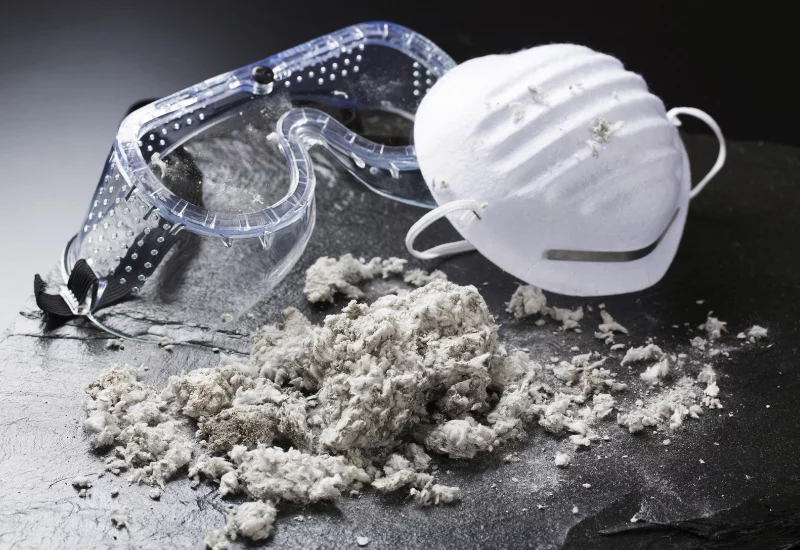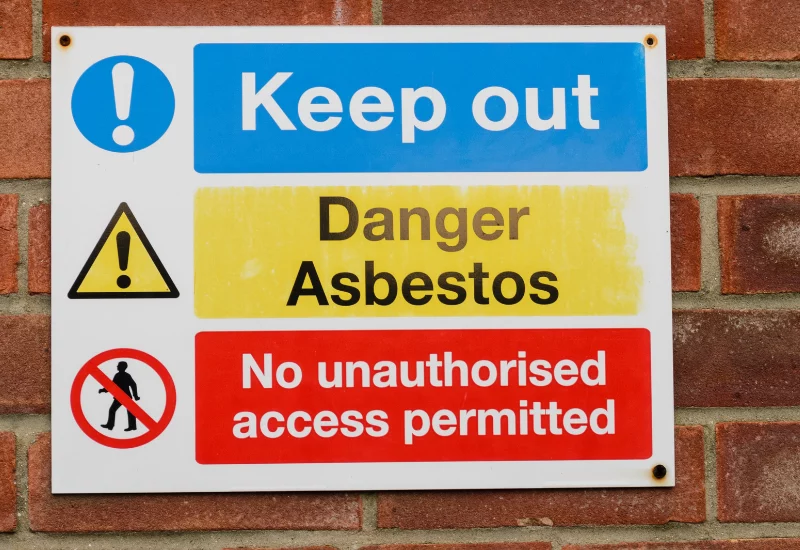- 17 Feb 2022
- •
- 5 min read
Health & Safety Executive Reveals the Latest UK Asbestos Statistics

John Hall, specialist asbestos solicitor at Trethowans, looks at the latest figures from the Health & Safety Executive in its report from July 2021 – what can we learn?
How many people in the UK die from asbestos-related diseases?
Asbestos diseases mesothelioma, asbestos lung cancer and asbestosis continue to be responsible for more than 5,000 deaths a year. To put this in perspective, there were 607,922 deaths reported in 2020, meaning that asbestos-related diseases accounted for nearly 1% of all deaths in the UK. This is quite staggering when you consider the current circumstances of health and safety awareness and shows that asbestos continues to have long-lasting consequences.
What the Health & Safety Executive’s report had to say about asbestos disease
1. Mesothelioma
The Health and Safety Executive (HSE) notes that ‘Annual deaths increased steeply over the last 50 years, a consequence of mainly occupational asbestos exposures that occurred because of the widespread industrial use of asbestos during 1950-1980’.
The latest statistics provided by the HSE are as follows:
- There were 2,369 mesothelioma deaths in Great Britain in 2019; this is 7% lower than the annual average number of 2540 over the period 2012-2018.
- There were 1,945 male deaths in 2019: this is 9% lower than the annual average number of 2,126 for males over the period 2012-2018.
- Deaths among females remained at a similar level to the last few years with 424 in 2019.
- The 2019 figures for males are in-line with earlier predictions suggesting that annual mesothelioma deaths would gradually start to reduce by around year 2020.
- The 2019 figures for females are in-line with earlier predictions suggesting that annual counts during the 2020s would remain at the current level before starting to decline.
- More than half of annual deaths now occur in those aged over 75 years. Annual deaths in this age group continue to increase while deaths below age 70 are now decreasing.
- There were 2,025 new cases of mesothelioma assessed for Industrial Injuries Disablement Benefit (IIDB) in 2019 of which 240 were female. This compares with 2,230 new cases in 2018, of which 245 were female.
- Men who worked in the building industry when asbestos was used extensively in the past continue to be most at risk of mesothelioma.
- Although some deaths that occurred in 2019 took longer to be registered during the COVID-19 pandemic in 2020, the number of late registrations by March 2021 (the cut-off for inclusion in these statistics) was similar to the number expected based on patterns of late registrations in previous years.
2. Asbestos-related lung cancer
The HSE notes that:
In recent years there have been, on average, around 260 new cases of asbestos-related lung cancer each year, with 240 reported in 2019, within the Industrial Injuries Disablement Benefit (IIDB) scheme (click here to find out more regards to benefits which are available to people with an asbestos related illness) There were an estimated 74 cases of lung cancer identified by chest physicians in 2019 within the Health and Occupation Research (THOR) scheme, close to the average of 73 per year over the last ten years. Most of these cases are associated with asbestos. Typically, females account for 2% of IIDB cases and less than 1% of THOR cases.
3. Other asbestos-related cancers
The HSE comments on the conclusions of the most recent review by the International Agency for Research on Cancer (IARC), that in addition to mesothelioma and lung cancer there is sufficient evidence that asbestos can cause cancer of the larynx, ovary, pharynx and stomach.
Two of these cancers (larynx and stomach) were already known to be caused by asbestos when the Burden of Occupational Cancer research was carried out and so estimates of the current annual number of new cases and deaths are available.
Based on mortality data for 2014-2018 and cancer incidence data for 2013-2017, the HSE’s current estimated annual number of cases and deaths attributed to past asbestos exposure were:
- for cancer of the larynx: 9 cases and 3 deaths;
- for cancer of the stomach: 40 cases and 26 deaths.
4. Asbestosis
The latest HSE statistics for deaths where asbestosis contributed as a cause of death based on the Asbestosis Register show:
- Deaths mentioning asbestosis (excluding those that also mention “mesothelioma”) have increased substantially over a number of decades: there were 490 such deaths in 2019 compared with around 100 per year in the late 1970s. Typically, in recent years, around 2-3% of these deaths were among women.
- In around half of these deaths in 2019, asbestosis was mentioned on the death certificate, but not as the underlying cause of death.
- Deaths also mentioning mesothelioma are excluded, since here the term “asbestosis” may have been used incorrectly to indicate the role of asbestos fibres in causing the separate disease mesothelioma. There were 24 such deaths in 2019.
- There were 219 deaths in 2019 where asbestosis was recorded as the underlying cause of death (defined as the disease or injury that initiated the events leading directly to death).
- Interpretation of these figures is further complicated by the fact that cases of asbestosis may sometimes not be recorded as such because they may be mistaken for other types of lung fibrosis – or recorded as “idiopathic” cases (i.e. lung fibrosis without a known cause) – or may go undiagnosed.
5. Non-malignant pleural disease – pleural thickening
Non-malignant pleural disease is a non-cancerous condition affecting the outer lining of the lung (the pleura). It includes two forms of disease: diffuse pleural thickening and the less serious pleural plaques. A substantial number of cases continue to occur each year in Great Britain, mainly due to workplace asbestos exposures many years ago.
It is important to note that it is no longer possible to pursue claims for pleural plaques alone in respect of asbestos exposure that occurred in England and Wales.
The most recent HSE statistics show that:
- There were 510 new cases of pleural thickening assessed for Industrial Injuries Disablement Benefit in 2019. The annual number has been fairly constant over the last 10 years, with an average of around 460 new cases per year of which around 1% are female.
- An estimated 366 new cases of non-malignant pleural disease mainly caused by asbestos were reported by chest physicians in 2019. Typically, around 2-3% of cases are female. A substantial proportion of these were cases of pleural plaques.
- Pleural plaques are usually symptomless and are often identified in the THOR scheme when individuals have chest x-rays for other conditions. For these reasons, there are likely to be substantially more individuals in the population with pleural plaques than those identified by chest physicians.
Despite an encouraging set of statistics from the HSE, based on our current workload in the Trethowans occupational disease department, and the steady flow of new enquiries, we expect to be acting on the behalf of the victims of asbestos diseases for many years to come. We look to provide those living with an asbestos-related disease with swift and knowledgeable assistance, helping victims to better manage the day-to-day with their condition.
To find out more about how we can help if you, or a member of your family, has been affected by asbestos disease, please read our dedicated asbestos page and take a look at our film, located in John Hall’s profile in the ‘meet the team’ section.
John Hall is a specialist asbestos lawyer with many years of experience acting for clients to get them the compensation they’re due. You can contact John today on 02380 820 526.


